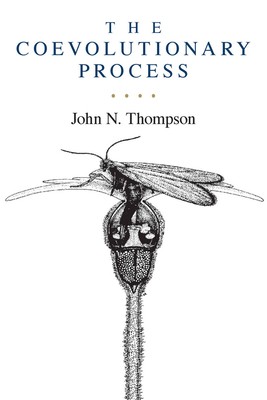
- We will send in 10–14 business days.
- Author: John N Thompson
- Publisher: University of Chicago Press
- ISBN-10: 0226797600
- ISBN-13: 9780226797601
- Format: 15.5 x 23 x 2.5 cm, softcover
- Language: English
- SAVE -10% with code: EXTRA
Reviews
Description
Traditional ecological approaches to species evolution have frequently studied too few species, relatively small areas, and relatively short time spans. In The Coevolutionary Process, John N. Thompson advances a new conceptual approach to the evolution of species interactions--the geographic mosaic theory of coevolution. Thompson demonstrates how an integrated study of life histories, genetics, and the geographic structure of populations yields a broader understanding of coevolution, or the development of reciprocal adaptations and specializations in interdependent species.
Using examples of species interactions from an enormous range of taxa, Thompson examines how and when extreme specialization evolves in interdependent species and how geographic differences in specialization, adaptation, and the outcomes of interactions shape coevolution. Through the geographic mosaic theory, Thompson bridges the gap between the study of specialization and coevolution in local communities and the study of broader patterns seen in comparisons of the phylogenies of interacting species.EXTRA 10 % discount with code: EXTRA
The promotion ends in 19d.12:59:43
The discount code is valid when purchasing from 10 €. Discounts do not stack.
- Author: John N Thompson
- Publisher: University of Chicago Press
- ISBN-10: 0226797600
- ISBN-13: 9780226797601
- Format: 15.5 x 23 x 2.5 cm, softcover
- Language: English English
Traditional ecological approaches to species evolution have frequently studied too few species, relatively small areas, and relatively short time spans. In The Coevolutionary Process, John N. Thompson advances a new conceptual approach to the evolution of species interactions--the geographic mosaic theory of coevolution. Thompson demonstrates how an integrated study of life histories, genetics, and the geographic structure of populations yields a broader understanding of coevolution, or the development of reciprocal adaptations and specializations in interdependent species.
Using examples of species interactions from an enormous range of taxa, Thompson examines how and when extreme specialization evolves in interdependent species and how geographic differences in specialization, adaptation, and the outcomes of interactions shape coevolution. Through the geographic mosaic theory, Thompson bridges the gap between the study of specialization and coevolution in local communities and the study of broader patterns seen in comparisons of the phylogenies of interacting species.

Reviews